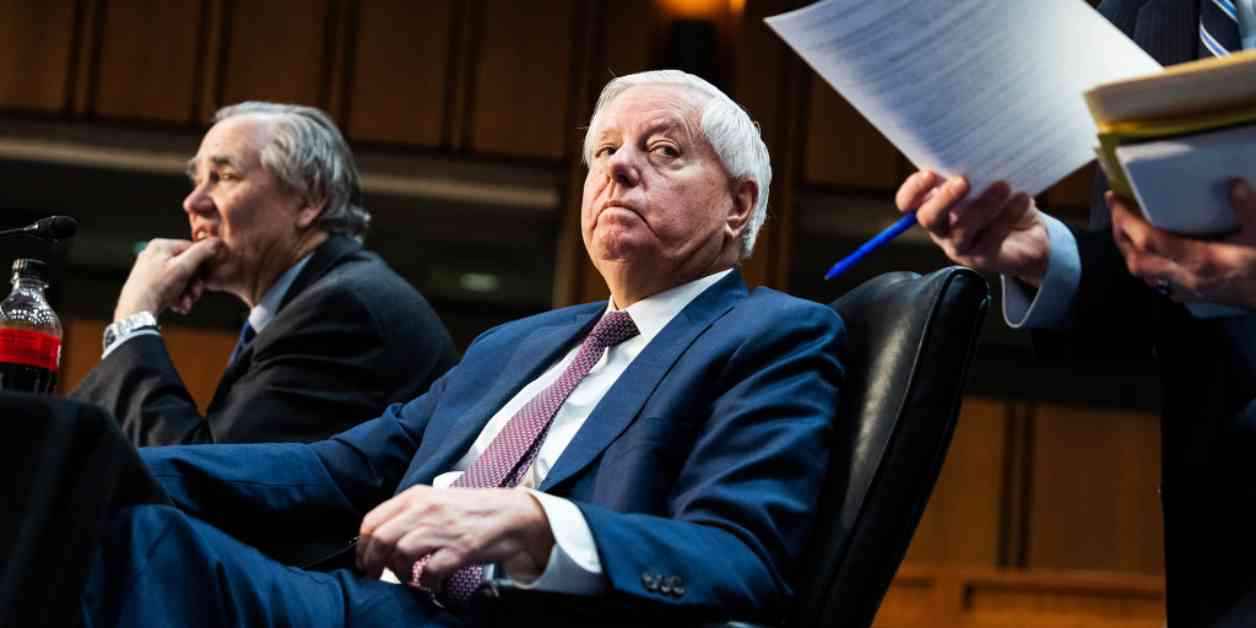In the wee hours of Friday morning, the Senate, led by the Republican majority, made a significant move by approving a $340 billion budget blueprint aimed at bolstering President Donald Trump’s priorities in immigration enforcement, energy production, and military spending. The intense voting session, known as “vote-a-rama,” lasted for 10 hours and saw the approval of 33 amendments before the final vote of 52-48. Notably, Senator Rand Paul of Kentucky stood alone among Republicans in voting against the resolution, aligning with all 47 Democrats.
Senate Takes a Stand
Senate Budget Committee Chair Lindsey Graham emphasized the critical nature of the bill’s passage, stressing, “Without this bill passing, there is no hope of getting money for the border.” This sentiment highlights the urgency felt by lawmakers in addressing key issues such as border security, defense, and energy funding. The blueprint’s approval now shifts the focus to the House of Representatives, which is set to consider its own competing budget resolution in the coming week. This proposed House version includes provisions for a $4.5 trillion tax cut and a $4 trillion debt limit increase in addition to addressing border security, defense, and energy.
Senator Graham’s call for unity and collaboration between the two chambers underscores the importance of a cohesive approach to budgetary matters. While President Trump has expressed support for the House bill, Senate Republicans are prepared with a fallback plan in case the House blueprint encounters obstacles. The need for a comprehensive strategy that aligns with the President’s vision while also addressing fiscal concerns is a central theme in the ongoing budget discussions.
Challenges and Controversies
The Senate deliberations were not without opposition, as Senator Paul raised concerns about the budget’s deviation from GOP principles of fiscal conservatism. His questioning of the substantial spending increase and the potential reallocation of funds from other sources adds a layer of complexity to the budget approval process. Moreover, the dynamics between Republicans and Democrats in proposing and rejecting amendments underscore the challenges in finding common ground on budget priorities.
The tension between different viewpoints regarding the budget becomes evident in the Senate’s consideration of amendments, with Democrats aiming to safeguard programs they view as crucial and Republicans advocating for fiscal responsibility. The passage of just two amendments and the rejection of others indicate the contentious nature of the budget debate and the divergent paths taken by lawmakers in shaping the final resolution.
The intricacies of the budget reconciliation process, which allows for expedited consideration of legislation related to spending and taxes, present both opportunities and limitations for lawmakers. Balancing competing interests, such as funding for immigration enforcement, military expansion, and spending cuts, requires a delicate approach that considers the broader implications of budgetary decisions. The need to navigate procedural rules and political dynamics underscores the complexity of the budgetary landscape in Congress.
As Vice President JD Vance highlighted, the road ahead for passing a reconciliation package involves navigating various hurdles and competing priorities. The timeline for achieving consensus on budgetary matters remains ambitious, with key stakeholders acknowledging the challenges of reconciling disparate views and interests. The evolving nature of the budget process underscores the importance of continued dialogue and negotiation to reach a viable resolution that addresses the nation’s pressing needs.
In conclusion, the Senate’s approval of the $340 billion budget blueprint reflects a critical step in advancing President Trump’s policy agenda while also highlighting the complexities and challenges inherent in the budgetary process. The interplay between competing priorities, procedural rules, and political dynamics underscores the need for a collaborative and strategic approach to budget negotiations. As lawmakers in both chambers work towards a unified vision for the nation’s fiscal future, the path to achieving consensus remains uncertain yet essential for addressing pressing issues facing the country.


